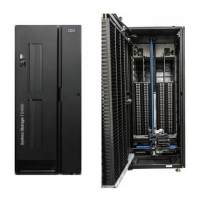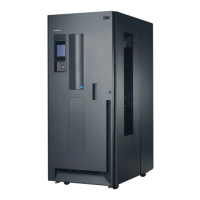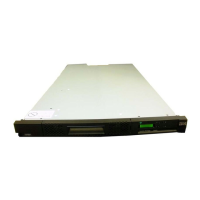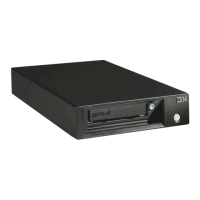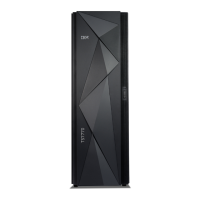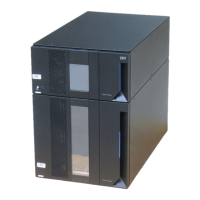Table 14. Differences between CPF and DPF (continued)
Characteristic CPF DPF and Load Balancing
Notes:
1. SMC = SCSI-3 Medium Changer Specication (library)
2. SSC = SCSI-3 Stream Commands (drive)
3. LUN = logical unit number
4. See “Host connectivity” on page 20 for details.
5. Load balancing is not supported on Windows
6. Full-height tape drives only
For information about using these features, see the IBM Tape Device Drivers Installation and User's Guide
(GA32-0565).
Alerts and logging
The library sends alerts about the library and attached tape drives, and offers audit-logging to track user
actions.
• TapeAlert Support: The tape library is compatible with TapeAlert technology, which provides error and
diagnostic information about the drives and the library to the host application. The library provides this
error and diagnostic information as TapeAlert flags that are reported to the application by the SCSI
LOG SENSE command. See “TapeAlert flags” on page 108
.
• Email (SMTP - Simple Mail Transfer Protocol) Notications: The library can congure email
notication of library events. The library must have network access to an SMTP server. See “Locating
Management functions” on page 65.
• Remote Logging (rsyslog): The library can send syslog (system log) notications to a congured remote
(rsyslog) server. When system events occur, the TS4300 tape library creates a log of these events. With
this notication feature congured, the library sends a notication of the event to the syslog server. The
syslog server keeps its own log of system events. (The syslog server is a customer-provided server.) See
“Locating Management functions” on page 65.
• SNMP Support: The Simple Network Management Protocol (SNMP) allows the library to send alerts
over a LAN network to a monitoring server.
Occasionally, the library might encounter situations that you want to know about. These situations can
be conditions that affect the library performance, such as an open door that causes the library to stop.
You might also want to log user actions, such as a cartridge move or export that is initiated from the
Management GUI. SNMP messages can alert you of these conditions.
The library provides a standard TCP/IP protocol that is called SNMP to send alerts about conditions over
a TCP/IP LAN network to an SNMP monitoring server. These alerts are called SNMP traps. Using the
information that is supplied in each SNMP trap, the monitoring server (together with customer-supplied
software) can alert operations staff of possible problems or operator interventions that occur. Many
monitoring servers can be used to send email or pager notications when they receive an SNMP alert.
See the manual for your network management application.
The monitoring server must be loaded with systems management software that can receive and
process the trap. SNMP supports a get and get-response mechanism for an operator to gather more
information about a problem or query the library about its status. Through a monitoring server, the
operator enters a "get" using SNMP to request information about the library. A get-response is the
information that is provided in response to the get. This type of support generally requires an up-to-
date library Management Information Base (MIB). The SNMP server's MIB contains units of information
that specically describe an aspect of a system, such as the system name, hardware number, or
communications conguration.
IBM provides the MIBs that are supported by the library. They include
Chapter 1. Overview
19
